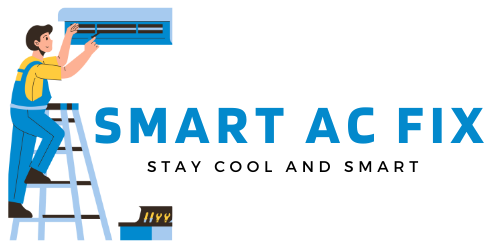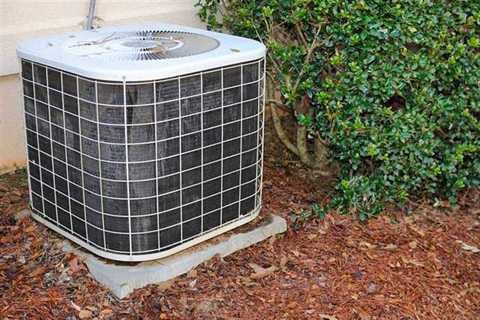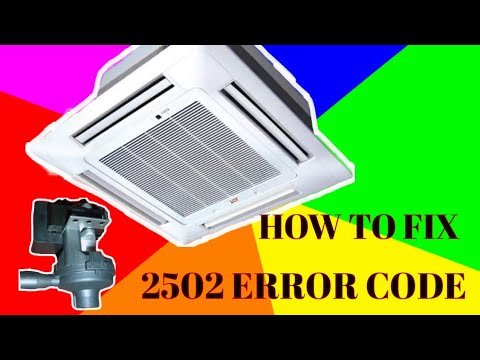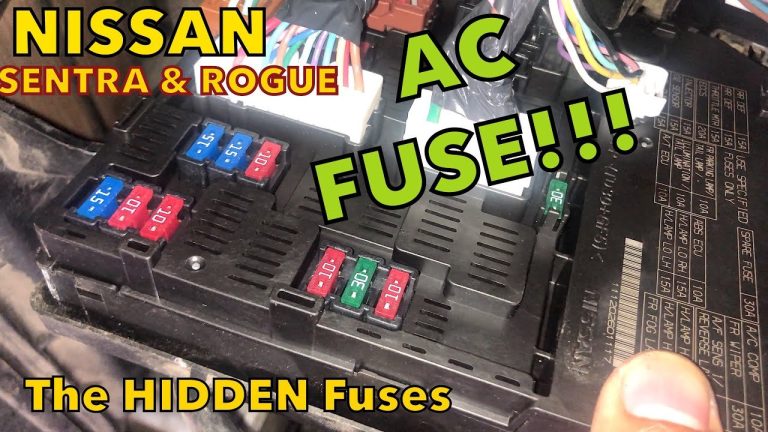How To Clean Ac Blower Without Removing: Easy And Effective Methods
To clean an AC blower without removing it, follow these steps: 1. Turn off the power: Before starting any cleaning, make sure to turn off the power to the AC unit to avoid any accidents. 2. Access the blower: Locate the access panel on your AC unit that leads to the blower compartment. This is usually found on the side or bottom of the unit. 3. Remove debris: Use a vacuum cleaner or a brush to remove any visible debris or dirt from the blower compartment, including the blades of the blower. 4. Clean the blades: Use a damp cloth or sponge with a mild detergent to gently wipe down the blower blades, removing any stubborn dirt or grime. 5. Clean the housing: Wipe down the inside of the blower housing with a damp cloth to remove any dust or dirt that may have accumulated. 6. Check the filter: While you’re cleaning the blower, take a moment to check and clean or replace the air filter if necessary. A dirty filter can restrict airflow to the blower and decrease its efficiency. 7. Reassemble and test: Once everything is clean, carefully put the blower compartment and access panel back together. Turn on the power and test the AC unit to ensure it’s working properly. Remember, if you’re unsure about any step or if your AC unit requires professional maintenance, it’s best to consult a qualified HVAC technician.
Did you know that a dirty AC blower can lead to poor air quality, reduced cooling efficiency, and potential damage to your unit? As a homeowner or individual with an air conditioning system, keeping your AC blower clean is essential to maintain the overall performance and longevity of your unit. But here’s the catch: cleaning the AC blower typically involves the hassle of removing it from the system, which can be time-consuming and may require professional help.
What if I told you that there are easy and effective methods to clean your AC blower without removing it? Yes, you read that correctly. In this article, we will delve into these methods to help you keep your AC blower spotless without the need for any specialized tools or technical knowledge.
Whether you are a DIY enthusiast or simply looking for cost-effective solutions, these methods will save you time, effort, and potentially extend the lifespan of your air conditioning unit. So, let’s roll up our sleeves and discover how you can easily clean your AC blower and enjoy cleaner air, improved efficiency, and a healthier living environment—all without the hassle of removing it.
- Works on all 3/4″ drain lines.
- Clogs are cleaned in 30 seconds or less.
- Save money and calls to the AC maintenance company.
- One time install – in less than 10 minutes. Permanent Solution!
- Watch the video below to see how it works!
- AIR CONDITIONER COIL CLEANER SPRAY: Elevate the performance of your HVAC system with our heavy-duty AC coil cleaner foam spray; designed to effectively clean coils and extend the lifespan of your unit
- ODOR-BANISHING POWER: Our HVAC coil cleaner eliminates contaminants from AC coils, creating a fresh-smelling environment and enhancing indoor air quality to deliver a fresh-smelling atmosphere
- ENHANCED HVAC PERFORMANCE: Crafted with a self-expanding, biodegradable chemical formula, our air conditioner foam spray effectively removes dirt and buildup from coils, ensuring optimal functionality
- ECO-FRIENDLY: Not only meets but surpasses the industry standards for “green” products, providing a sustainable solution for coil maintenance; odorless, safe for both indoor and outdoor applications
- SIMPLE TO USE: Simply the 19 oz foam aerosol spray onto coils, let it activate for 5-10 minutes, then rinse off; designed with a 360-degree nozzle for accessing difficult-to-reach areas
- SAVE MONEY 🤑 Prevent water damage and avoid expensive HVAC service calls when you can easily unclog blockages in your AC condensate lines with this lightweight tool known also as a Gallo Gun. Made from high-quality materials for durability and long-lasting performance!
- EASY TO USE 🛠️ Simply unscrew the bottom, insert one threaded CO2 cartridge (sold separately) and tighten snug (NOTE: If no air expels, tighten a full rotation more and try again). Pull the trigger to create a powerful 850 psi burst of air that quickly clears buildup & debris in AC drain tubes or pipes. Say goodbye to the potential watery mess by fully flushing your AC drain lines!
- SAFETY FIRST 🦺 No electricity or chemicals required, making it safe and environmentally-friendly. Avoid companies that use environmentally unsafe practices like using refrigerant to blow out the AC drain lines!
- INCLUDES 💪 AC Coil Brush a must-have for your HVAC duct cleaning tools arsenal. AC unit maintenance is simple with the Boldox Whisk Brush. Smooth and stiff bristles remove all dirt, leaving condenser fins, evaporators, and coils clean!
- SUPPORT A VETERAN OWNED BUSINESS 🇺🇸 Boldox is a United States Air Force Veteran owned and operated family business with 20+ years of professional HVAC experience with the intention of providing high-quality HVAC tools and products to help the DIY homeowner with necessary preventative maintenance to ensure an efficient, reliable, and long lifespan of your heating and cooling systems!
- Wide Application: Mini-split cleaning set is suitable for air conditioning units and any electrical appliances with fins or coils, ranging from air conditioners to car AC systems and various equipment evaporators. It caters to diverse cleaning needs, ensuring comprehensive, effective, and thorough cleaning of your air conditioning systems.
- Upgrade Package: Compared to traditional air conditioning cleaning tools, this kit includes an additional AC fin comb set compared to traditional air conditioner cleaning tools. It consists of 1 x FCR6 ring fin comb set, 1 x stainless steel AC condenser fin straightener, 1 x plastic radiator cleaning comb, 1 x foldable cleaning brush, 1 x large white brush, and 1 x blue terry cloth brush, forming a more comprehensive air conditioner cleaning kit.
- Include: The Air Conditioner Cleaning Cover is equipped with a 9ft drain hose, an extended front waterproof curtain, and 3 waterproof sheets at the back. The included drain hose ensures efficient water drainage, prevents splashing and wall staining during cleaning, protects walls and floors from potential marks, and provides complete cleaning protection.
- Material: Our commitment to quality is evident in the utilization of a blend of jacquard fabric and PVC calendering, ensuring double waterproofing, reusability, and the option for use as a dust cover. Featuring a Velcro and elastic stretch design, this cover can be easily adjusted to fit various air conditioner sizes.
- Available Sizes: Small cleaning cover measures 10.62*10.62*39.37 inches, with a maximum stretching length of 27.55-39.37 inches, suitable for 9-18K. Before purchase, we recommend measuring your air conditioner to confirm compatibility. Should you have any further inquiries, please feel free to reach out to us.
- INDUSTRIAL-STRENGTH CLEANER: This heavy-duty AC vent cleaner effectively cleans the evaporator and condenser coils of an A/C system. The AC Coil Cleaner is a no-rinse coil cleaner and will get the job done without clogging the fins or coils.
- NO JOB IS TOO BIG OR TOO SMALL: Use the evap cleaner on refrigerators, whole-house air conditioners, rooftop HVAC units, auto radiators, air-cooled equipment, and more. The foaming coil cleaner for ac unit breaks down and removes junk like dirt, dust, grease, and oil.
- CONVENIENT SELF-RINSING DESIGN: Let the AC coil foam cleaner do all the heavy lifting for you. The ac unit coil cleaner for refrigerator alkaline detergent is self-rinsing, so all you have to do is spray it on and then let it go to work.
- LEAVES A PLEASANT FRAGRANCE: The air conditioner coil foaming cleaner may be industrial-strength, but it doesn’t smell like it. When you spray on the refrigerator coil cleaner, it will help neutralize odors and leave behind a pleasant lemon scent.
- HIGH-QUALITY, AMERICAN PRODUCTS: At QwikProducts, we turn cutting-edge technology into top-of-the-line, cost-effective products for our customers. We’re proud to say that all of our products are researched, designed, and manufactured in the USA.
- Heavy-duty foam dissolves stains, removes grease & oil, and loosens dirt
- Cleans coils, fan blades, and reusable air filters
- Neutralizes odors from standing water in drain pans
- Air conditioner coil foaming heavy duty detergent cleaner with low VOC formula
- Pleasant lemon fragrance leaves deodorized, fresh smell after cleaning. No rinse necessary.
- AC Drain Line Cleaner 4 Pack
- Large black Air Blaster easily removes dust and debris from cameras, lenses and filters with a powerful blast of air. Made of rubber. Includes a one-way valve to prevent Blaster from breathing in dust and spreading it back to your equipment
- Ideal for removing dust on object in macro photography. Blower Brush Camera Perfect For Cleaning Digital Slr Dslr Digital Camera Lens, Binocular Lens, Telescope Lens, Filters. The Surface Of Musical Instruments, Computers, Keyboards, Antiques, Optics, Electronics, Watch Cleaning And Mobile Phones, Etc
- Air Blaster Blower Delivers A Strong Blast Of Air To Remove Dust Particles From The Target Area
- Environmentally friendly & non-toxic. Made of high quality Rubber & Plastic
- The Microfiber Cloth is a perfect tool for cleaning HD and Dslr’s digital cameras & other products.
- Large black Air Blaster easily removes dust and debris from cameras, lenses and filters with a powerful blast of air. Made of rubber. Includes a one-way valve to prevent Blaster from breathing in dust and spreading it back to your equipment
- Excellent way to remove dust off sensitive camera parts without physical contact
- Environmentally friendly & non-toxic
- Made of high quality Rubber & Plastic
- Ergonomic design, easy to grip, feel better
- InterDynamics Certified A/C Pro Vent and Duct Cleaner, Professional Strength Odor Eliminator for Cars, Truck, HVAC, 10 Oz
I. Understanding the Importance of Cleaning the AC Blower
A. Explanation of the AC blower’s role in the cooling process
The AC blower is a crucial component of the air conditioning system. Its primary function is to circulate the air throughout your home, allowing for efficient cooling and maintaining a comfortable indoor environment. The blower pulls in warm air from inside your home and passes it through the evaporator coil, which cools the air before it is distributed back into your living spaces.
B. Why regular cleaning is necessary for optimal performance
Over time, dust, dirt, and debris can accumulate on the blower fan blades, motor, and housing. This buildup can hinder the blower’s ability to effectively circulate air, leading to reduced cooling efficiency and increased energy consumption. Regular cleaning is essential for maintaining optimal performance and ensuring that your AC system operates at its peak efficiency.
C. Potential consequences of neglecting AC blower maintenance
If the AC blower is not regularly cleaned, several issues can arise. Firstly, the accumulation of dirt and debris can restrict airflow, causing the blower motor to work harder to maintain the desired temperature. This can lead to increased wear and tear on the motor, potentially shortening its lifespan and resulting in costly repairs. Secondly, a dirty blower can also lead to poor indoor air quality, as the accumulated particles can be circulated back into your living spaces, potentially causing respiratory issues and allergies.
II. Preparing for Cleaning Without Removing the AC Blower
A. Ensuring safety precautions are in place
Prior to cleaning the AC blower, it is important to prioritize safety. Make sure to turn off the power supply to the AC unit to prevent any accidents or injuries. Additionally, wear protective gloves and eyewear to safeguard yourself from any potential debris or dust particles.
B. Gathering necessary tools and materials
To effectively clean the AC blower without removing it, you will need a few basic tools and materials. These include a soft brush or cloth, a mild detergent solution, compressed air canister, a vacuum cleaner with a brush attachment, and a long brush or rod to clear any clogs in the air intake and outlet.
C. Turning off the power supply to the AC unit
Before proceeding with the cleaning process, locate the circuit breaker or switch that controls the power supply to your AC unit, and turn it off. This step is crucial to ensure your safety and prevent any electrical mishaps during the cleaning process.
III. Accessing the AC Blower for Cleaning
A. Locating the blower compartment in the AC unit
The blower compartment is typically located near the air handler, which is the indoor unit of your air conditioning system. It is usually situated above the furnace or in the attic, depending on the configuration of your HVAC system. Consult the AC unit’s manual or contact a professional if you’re unsure about the exact location.
B. Removing the blower panel or cover
Once you have located the blower compartment, carefully remove the panel or cover that provides access to the blower components. This may require unscrewing a few screws or releasing clips, depending on the design of your AC unit. Take caution not to damage any wires or delicate components while removing the panel.
C. Identifying the blower motor and fan assembly
After removing the blower panel or cover, you will be able to identify the blower motor and fan assembly. The blower motor is typically situated at the center, while the fan blades are attached to it. This is the part of the blower that requires cleaning to ensure optimal performance.
IV. Cleaning the AC Blower Components
A. Removing dirt and debris from the blower fan blades
Start by gently wiping away any visible dust or debris from the blower fan blades using a soft brush or cloth. Make sure to cover the entire surface of the blades, including the edges. This step will help remove loose particles and improve the airflow.
1. Using a soft brush or cloth to gently wipe away visible dust
Take the soft brush or cloth and begin wiping the blower fan blades. Use gentle, sweeping motions to remove the dust and dirt that has accumulated on the blades. Be thorough in your cleaning, ensuring that both sides of the blades are clean.
2. Applying a mild detergent solution for more stubborn buildup
If there is stubborn buildup or grime on the fan blades, create a mild detergent solution by mixing a small amount of mild dish soap with warm water. Dampen a cloth with the solution and carefully clean the blades, ensuring not to saturate the motor or electrical components. Rinse the blades with a clean, damp cloth to remove any soap residue.
B. Cleaning the blower motor and housing
Next, direct your attention to the blower motor and housing. These areas can also accumulate dirt and debris, affecting the blower’s performance.
1. Using compressed air to blow away loose dirt and debris
Take the compressed air canister and use it to blow away any loose dirt or debris from the blower motor and housing. Hold the canister upright and use short bursts of air to dislodge the particles. Be sure to direct the airflow away from yourself and any delicate components.
2. Inspecting for any signs of damage or malfunction
While cleaning the blower motor and housing, take the opportunity to visually inspect for any signs of damage or malfunction. Look for loose wires, corrosion, or excessive dust buildup that could indicate a problem. If you notice any issues, it is best to consult a professional technician for further assistance.
C. Clearing clogs in the blower air intake and outlet
The blower air intake and outlet can sometimes become clogged with debris, hindering the airflow and reducing the blower’s efficiency.
1. Removing obstructions with a vacuum cleaner or long brush
Use a vacuum cleaner with a brush attachment or a long brush to remove any visible obstructions from the blower air intake and outlet. Gently maneuver the brush or vacuum attachment to dislodge and remove the debris. Take caution not to damage any delicate components during this process.
2. Checking for any debris buildup in the ductwork
While cleaning the blower air intake and outlet, it is also advisable to check for any debris buildup in the ductwork. Shine a flashlight into the ducts and visually inspect for any large accumulations of dust or dirt. If necessary, consult a professional duct cleaning service to thoroughly clean the ducts.
V. Maintaining the AC Blower Regularly
A. Establishing a cleaning schedule for optimal performance
To maintain optimal performance, it is recommended to establish a regular cleaning schedule for your AC blower. The frequency of cleaning depends on various factors such as the level of dust and debris in your environment. As a general guideline, cleaning the blower every six months is a good starting point.
B. Replacing air filters as recommended by the AC manufacturer
In addition to cleaning the blower, it is crucial to replace the air filters as recommended by the AC manufacturer. Clogged or dirty air filters can strain the blower motor and reduce its efficiency. Regularly replacing the filters will not only improve the blower’s performance but also contribute to better indoor air quality.
C. Monitoring and addressing any unusual noises or vibrations
As part of regular maintenance, monitor your AC system for any unusual noises or vibrations coming from the blower. These can be signs of underlying issues or potential mechanical failures. If you notice anything out of the ordinary, it is advisable to consult a professional HVAC technician to diagnose and address the problem.
VI. Reassembling and Testing the AC Blower
A. Securing the blower panel or cover back in place
Once you have completed the cleaning process, carefully reattach the blower panel or cover. Make sure it is securely fastened to prevent any air leaks or unwanted vibrations. Double-check that all screws or clips are tightened properly.
B. Restoring power supply to the AC unit
After reassembling the blower components, return to the circuit breaker or switch that controls the power supply to your AC unit. Turn it back on to restore power and allow the blower to function properly.
C. Testing the AC blower for proper functioning and air circulation
With the power restored, switch on your AC system and test the blower for proper functioning and air circulation. Pay attention to the airflow and ensure that cool air is being distributed evenly throughout your home. If you notice any issues, such as weak airflow or unusual noises, it may be necessary to seek professional assistance to diagnose and resolve the problem.
VII. Additional Tips and Precautions
A. Consulting the AC manufacturer’s manual for specific instructions
While the methods mentioned above are generally applicable, it is always advisable to consult the AC manufacturer’s manual for specific instructions related to cleaning the blower. Different AC models may have unique requirements or recommendations that can help ensure proper maintenance.
B. Seeking professional assistance if unsure or uncomfortable with DIY cleaning
If you feel unsure or uncomfortable performing the AC blower cleaning yourself, it is best to seek professional assistance. HVAC technicians have the expertise and specialized tools required to clean the blower thoroughly and address any underlying issues that may be affecting its performance.
C. Being mindful of electrical connections and avoiding contact with live wires
When accessing the blower compartment and cleaning the blower components, it is essential to be mindful of electrical connections and avoid any contact with live wires. If you are unsure about handling electrical components, it is best to leave the cleaning to professionals.
How to Remove MOLD from Aircon BLOWER WHEEL | Cleaning Air Conditioner Unit
Frequently Asked Questions (FAQ)
1. How can I clean the AC blower without removing it?
2. Can I use a blower to clean the AC blower?
3. Is it necessary to clean the AC blower regularly?
4. How often should I clean the AC blower without removing it?
5. Can I use cleaning solutions or chemicals to clean the AC blower?
Final Words: Cleaning the AC Blower for Optimal Performance and Air Quality
In conclusion, understanding the importance of cleaning the AC blower is crucial to maintaining optimal performance and indoor air quality. Neglecting AC blower maintenance can result in reduced cooling efficiency, increased energy consumption, and potential damage to the blower motor.
To clean the AC blower without removing it, it is necessary to take safety precautions, gather the necessary tools, and turn off the power supply to the AC unit. Accessing the blower compartment involves locating it, removing the panel or cover, and identifying the blower motor and fan assembly.
The cleaning process includes removing dirt and debris from the blower fan blades, cleaning the blower motor and housing using compressed air, and clearing any clogs in the air intake and outlet. It is also important to establish a regular cleaning schedule, replace air filters as recommended, and monitor for any unusual noises or vibrations. After cleaning, reassembling the blower components and restoring the power supply should be done carefully.
Finally, testing the AC blower for proper functioning and air circulation will ensure that the cleaning process has been successful. It is important to consult the AC manufacturer’s manual for specific instructions and seek professional assistance if unsure or uncomfortable with DIY cleaning. Being mindful of electrical connections and avoiding contact with live wires is crucial for safety during the cleaning process.
















